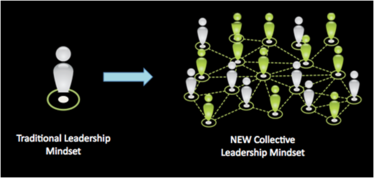Transcend Organizational Constraints
August 2, 2010 Leave a comment
This is a very exciting time for those of us who are working to apply the logic of networks to the work of social change. Our ideas are gaining traction as more and more experiments start to point towards success. Life online, the viral nature of meaningful stories and our human desire for deeper connection all serve to confirm our intuitive understanding of life in a network. However, as we step into this paradigm shift, as we start to approve of these ideas, we still have to contend with the constraints of the organizational and funding structures within which we currently work.
A few years ago, my hardest challenge was in persuading my peers in this work that networks made more sense than the more familiar organizational and coalitional structures with which we were working. Today more and more people “get” that it’s about networks, but we have not figured out how to arrange our work together so that we can more easily step into this paradigm.
How then do we transcend our organizational constraints? Some of my more courageous friends have simply said “enough,” they’ve given up the security of organizational structures and ventured out on their own in order to find the freedom to connect with others and actually live into a network. I celebrate their choice, I wish them success and I intend to remain among the people they choose to work with.
But while abandoning a calcifying infrastructure should become a more viable choice, I am also interested in finding ways to shift the way we work even within our organizations. If we start to do things differently within our organizations, then we will force them to change while keeping them as vehicles wherever we still find them useful. This is way easier said than done, systems are incredibly resilient and they are mightily resistant to change.
A set of ideas that I have been playing with are directly inspired by the now famous 20% time that Google offers its employees – “enabling engineers to spend one day a week working on projects that aren’t necessarily in [their] job descriptions.” But my idea is a bit different. I am encouraging boldly innovative organizations to give 20% to the right employees so that they can network. By network I mean the gamut – build relationships, support other (and potentially unrelated) projects, convene other stakeholders, spend time learning from each other, devote time to online social networks – I am referring to those actions that are hard to fit into a strategic plan, but that are the very actions that make for a networked organization.
Inspired by Leadership for a New Era’s piece on “A New Leadership Mindset for Scaling Social Change,” I would couple this idea for connecting with building more intentional time for learning and reflecting within the organization. Staff meetings would have to include time for sharing stories from the field, relatively loose exchanges about what each “networked employee” is up to during their 20% time. The sharing of stories instead of bullet point memos allows employees to better swim in the complexity of a network, develop a shared sense of the emergent field and welcome unexpected connections.
Both of these steps are extremely challenging to implement in the context of our current “overwork” crisis. Accountability measure would have to change and the boldly innovative organization would have to undergo the adaptive shift – the shift in values, beliefs and assumptions – that would allow it to understand that tending to a network is a more strategic choice than overworking your team in search of the sort of outcome that is more easily measurable but less likely to make change.
No Comments